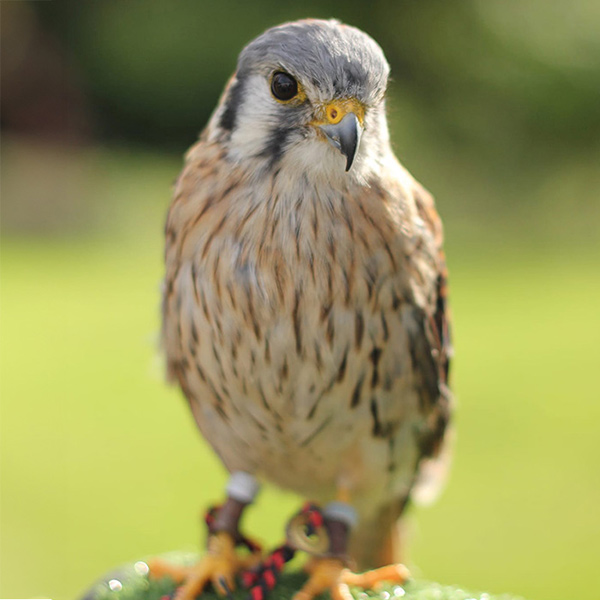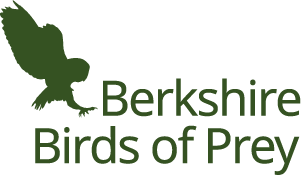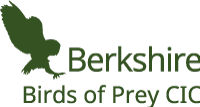Our birds
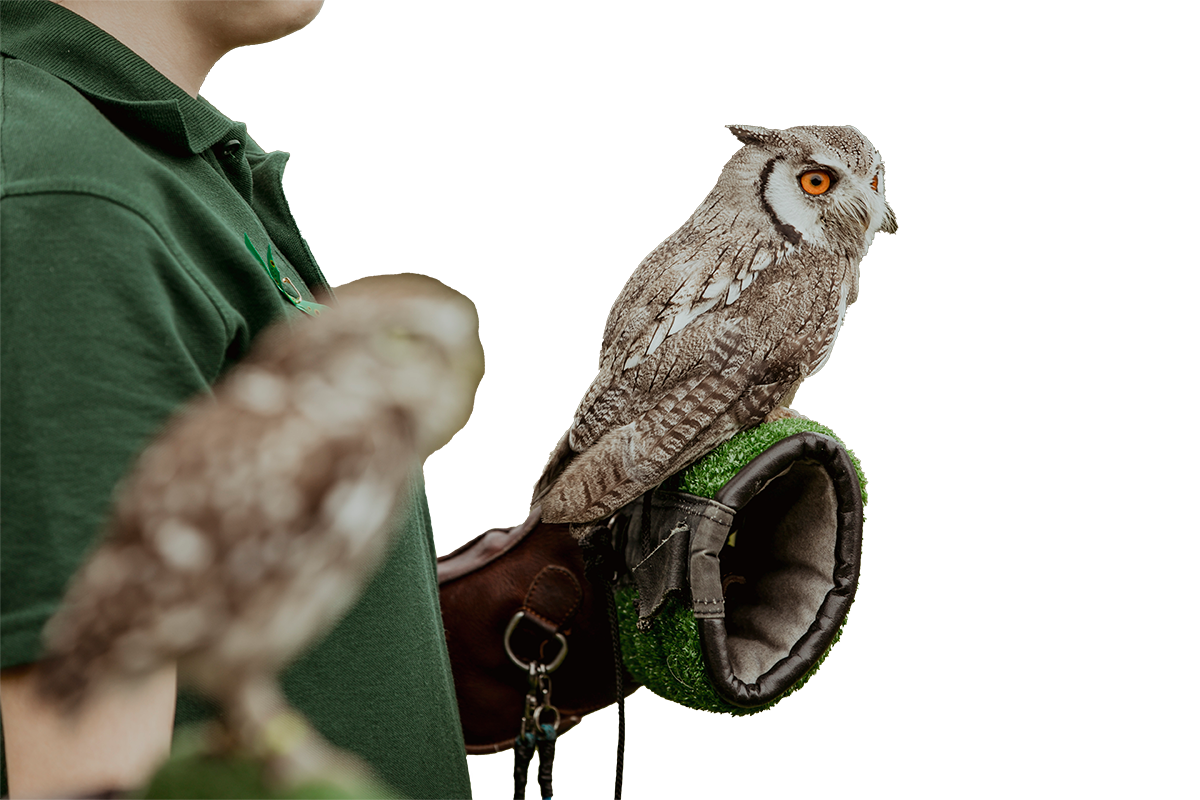
Explore the beauty and grace of these incredible birds that we consider to be part of our family
Each of these avian wonders boasts a unique charm, distinct beauty, and an extraordinary set of skills that have evolved over countless millennia.
Just like us, each bird has its own distinct personality and fascinating traits. Discover the adaptations that make them formidable hunters and gain a deeper understanding of the delicate balance in the natural world.
Bella
Barn Owl Tyto alba
Date of Birth: 18th January 2021
Gender: Female
Introduction: Bella absolutely loves frogs, it's not unusual to spot her with a pair of legs dangling from her beak after a successful hunt. She rarely can contain her excitement as she dances with her catch.
Conservation Status: Least Concern (Population stable)
Fun Fact: Barn Owls are the worlds most widespread owl being in every continent except Antartica. They are also known for their exceptional night vision, allowing them to hunt effectively even in low light conditions.

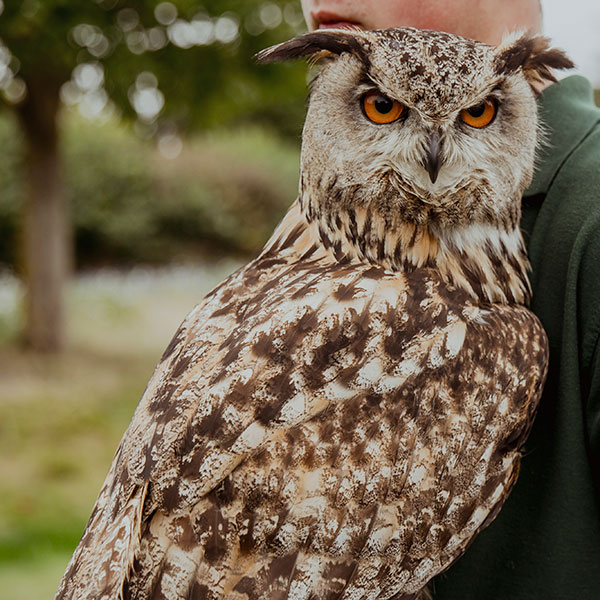
Bertie
European Eagle-Owl Bubo bubo
Date of Birth: 2nd April 2009
Gender: Male
Introduction: Bertie is a remarkable European Eagle Owl known for his affectionate nature. Bertie whilst being the biggest of our birds, breaks stereotypes with his love for cuddles with everyone he meets.
Conservation Status: Least Concern (Population decreasing)
Fun Fact: The female Eagle-Owl is one of the largest species of owls in the world, with males being slightly smaller.
Moe
White-Faced Scops Owl Ptilopsis leucotis
Date of Birth: 16th March 2017
Gender: Male
Introduction: Moe has earned the title of our "little grumpy old man". Moe's distinctive moustache-like feathers around his beak give him this unique feature that helps with his poor eyesight and adds to his charming appearance.
Conservation Status: Least Concern (Population stable)
Fun Fact: When threatened, the White Faced Scops Owl may display an intimidating behavior known as "ear-tufting". It raises and spreads its ear tufts while stretching to appear larger and more menacing to anyone approaching.
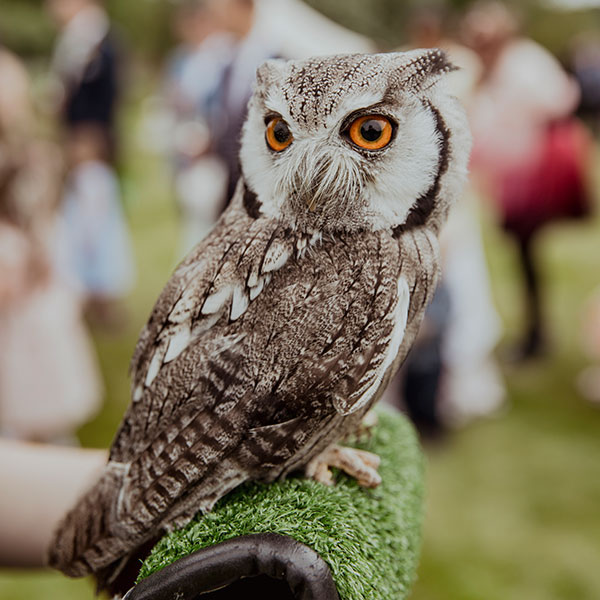
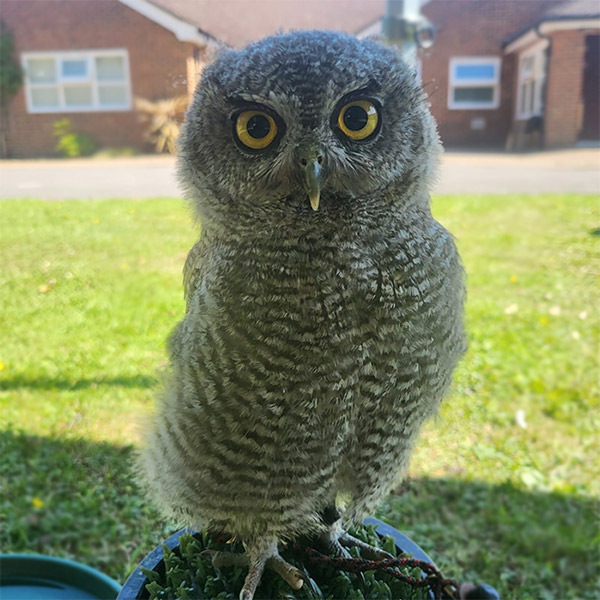
Fagin
Western Screech Owl Megascops kennicottii
Date of Birth: 30th May 2023
Gender: Male
Introduction: Fagin is a true cuddle enthusiast, earning him the fitting nickname "massive cuddle bum." He thrives on affection and is always ready for a warm and cozy embrace. What sets Fagin apart is his unconventional sleeping style. Much like a duck, he's often seen sleeping lying down flat on his belly.
Conservation Status: Least Concern (Population decreasing)
Fun Fact: In contrast to common misconceptions, the screech owl doesn't emit screeches. Instead, its vocalization resembles more of a trill or a whinny.
Luke Skywalker
Little Owl Athene noctua
Date of Birth: 3rd July 2018
Gender: Male
Introduction: Luke's excitement knows no bounds, especially when new faces appear. His signature move is a joyful jump, which he performs to show his enthusiasm for meeting everyone.
Conservation Status: Least Concern (Population stable)
Fun Fact: Unlike many other owl species, the Little Owl is known for its daytime activity (diurnal). It is often seen perched in the open during daylight hours.

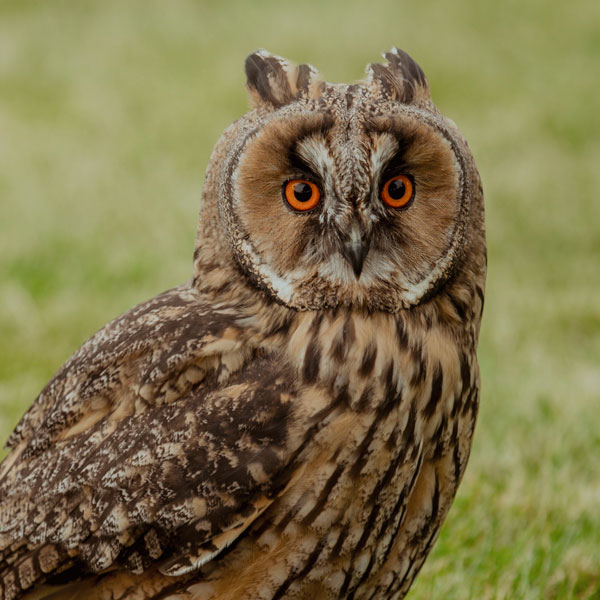
Lilo & Stitch
Long-Eared Owl Asio otus
Date of Birth: 12th May 2023 and 13th May 2023
Gender: Female and Male
Introduction: Lilo and Stitch have a heartwarming tradition. Whenever they see new people, these two joyful owls perform a synchronized stomping dance. It's one of the most endearing and heartwarming displays of welcome.
Conservation Status: Least Concern (Population decreasing)
Fun Fact: While often referred to as the 'long-eared' owl, the tufts on its head aren't in fact ears. These tufts serve the purpose of creating the illusion of a larger size when threaten.
Timmy & Pumba
Tawny Owl Strix aluco
Date of Birth: 2nd April 2023 and 3rd April 2023
Gender: Male and Female
Introduction: These two owls share not only a strong sibling bond but also distinct personalities that make them a dynamic duo. Timmy may not be the smartest owl in the box, but his curiosity is boundless. Pumba is a food enthusiast with a keen nose for treats. Food is his greatest motivator, and his responsiveness to anything involving a potential meal is nothing short of remarkable.
Conservation Status: Least Concern (Population stable)
Fun Fact: The distinctive hoot of a male tawny owl is a common sound in TV, radio, and film productions, effectively capturing the essence of nighttime ambiance.
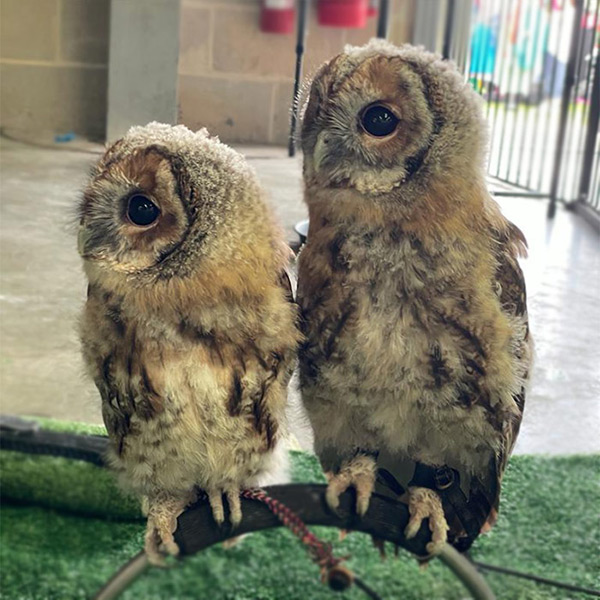
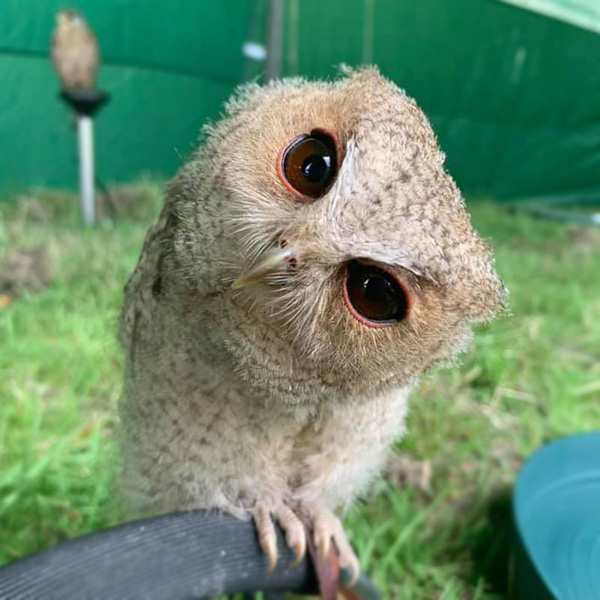
Toodles
Indian Scops Owl Otus bakkamoena
Date of Birth: 16th June 2023
Gender: Female
Introduction: Toodles is a unique and wonderful member of our bird family, reminding us that perfection comes in many forms. She possesses a distinctive bent beak that sets her apart. Toodles found her home with us because we embrace her individuality. Just like her, none of us are perfect, she teaches us the value of acceptance and inclusivity.
Conservation Status: Least Concern (Population stable)
Fun Fact: The Indian Scops owl inhabits lowlands and elevations of up to 2,200m in the Himalayas. They prefer forest and desert vegetations, as well as clusters of densely foliaged trees.
Indie
Brown Wood Owl Strix leptogrammica
Date of Birth: 17th March 2019
Gender: Female
Introduction: Indie's striking gaze, which some might interpret as judgmental, serves as a testament to her role as an astute observer.
Conservation Status: Least Concern (Population decreasing)
Fun Fact: Amongst one of the biggest owl species, the Asian Brown Wood Owl is predominantly known for belting out its signature rhythmic call 'hoo hoo HOO'.
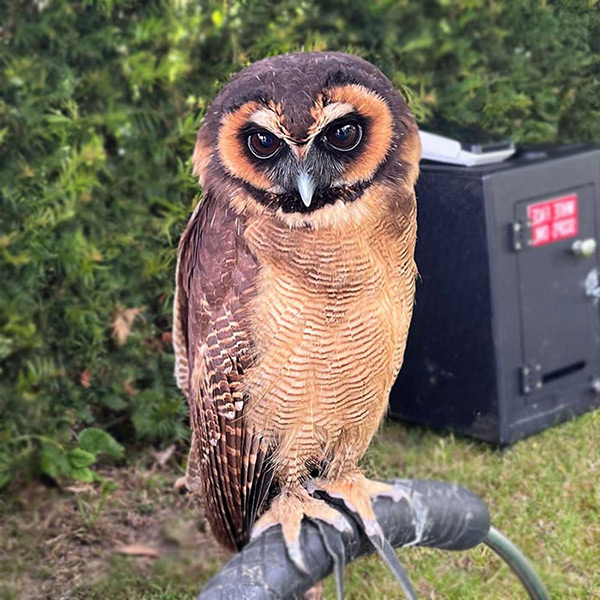

Buddy
Harris's Hawk Parabuteo unicinctus
Date of Birth: 5th May 2019
Gender: Male
Introduction: Buddy, brings a sense of maturity and agility to our raptor family. His maturity is apparent in his demeanor. He exudes wisdom and confidence, a result of his experiences in the wild and in our care.
Conservation Status: Least Concern (Population decreasing)
Fun Fact: Harris's Hawks demonstrate intelligence and teamwork in their unique social dynamics. They work collectively to capture prey, engaging in cooperative hunting behavior that sets them apart from other raptors.
Lightning McQueen
Harris's Hawk Parabuteo unicinctus
Date of Birth: 5th January 2020
Gender: Male
Introduction:True to his name, Lightning McQueen is known for his incredible speed. Unexpectedly, his vocal nature sets him apart, whether in flight or perched, he's a constant conversationalist, sharing his thoughts with the world around him.
Conservation Status: Least Concern (Population decreasing)
Fun Fact: Harris's Hawks are famous for their remarkable friendliness towards humans and their remarkable ability to develop strong bonds with their falconers. These qualities make them highly cherished and sought-after companions in the world of falconry.

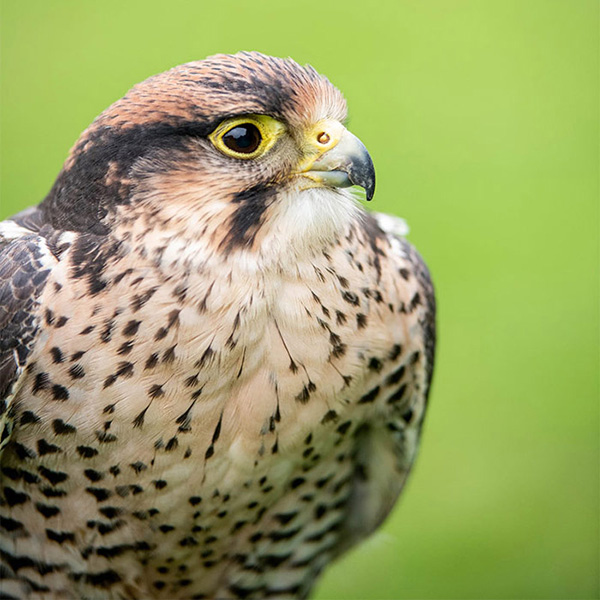
Princess Leia
Lanner Falcon Falco biarmicus
Date of Birth: 22nd April 2015
Gender: Female
Introduction: Princess Leia's name journey is a tale of its own. From the options of "Queen of Hearts" to "Gully" for her seagull-like calls, we finally settled on "Princess Leia" to capture her true royal demeanor and undeniable allure.
Conservation Status: Least Concern (Population increasing)
Fun Fact: The origin of their scientific name lies in Latin. 'Falcis' denotes the sickle shape, perhaps of their talons or wing. Meanwhile, 'biarmicus,' translating to 'Being twice armed,' hints at the purpose of the sharp beak notch.
Noddy
European Kestrel Falco tinnunculus
Date of Birth: 20th May 2020
Gender: Male
Introduction: Noddy's name is a reflection of his endearing habit. He's often seen nodding or bopping his head. While Noddy appreciates admiration, he prefers to keep his distance. He's not one for physical affection and chooses to maintain his independence as he's unapologetically proud of his appearance and makes it clear that he considers himself the epitome of beauty within the group.
Conservation Status: Least Concern (Population decreasing)
Fun Fact: The European Kestrel exhibits a remarkable hunting technique known as hovering. It remains stationary in mid-air, using subtle wing adjustments and tail control to scan the ground for prey with exceptional accuracy and efficiency.
